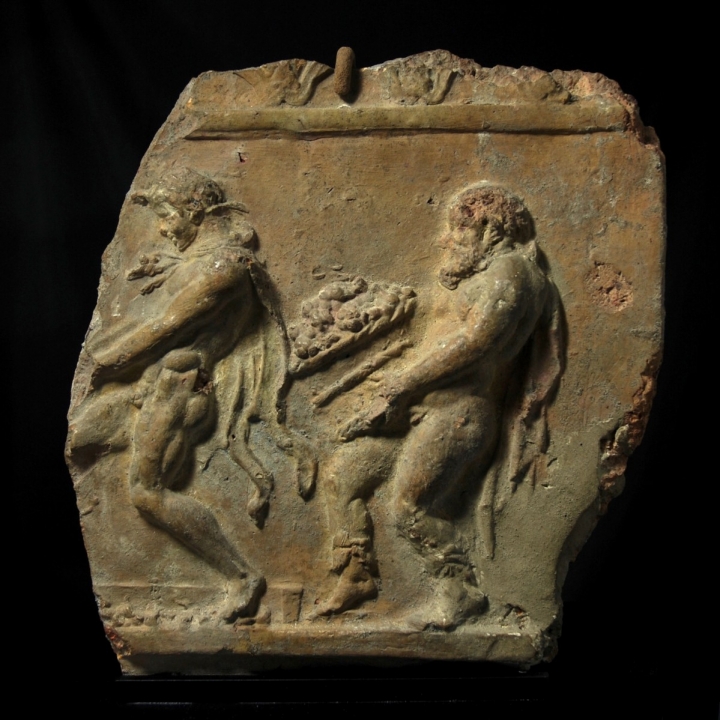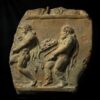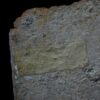Fragment of a Campana Relief Plate
Culture: Roman
Period: 1st century A.D.
Material: Terracotta
Dimensions: 24.8 cm x 23.5 cm
Price: Sold
Ref: 3204
Provenance: Old Austrian private collection from the 1st century of the 20th century.
Condition: A fragment with a detailed depiction in a beautiful condition.
Description: Large fragment from the right side of a Campana relief plate with a Dionysian scene. In the clearly protruding semi-sculptural relief, a naked youthful, muscular satyr with leopard skin running to the left. His arms stretched forward and probably carrying gifts for the Dionysian festival. He is followed by a stout, bearded Silenus, who is carrying a heavy basket full of grapes on his thigh. Above and below a marginal ridge. On the reverse a collection label from the 1st half of the 20th century with the German inscription: „Architektonisches Tonrelief mit Satir und Silen um Christi Geburt“ (Architectural clay relief with Satyr and Silenus around Christ’s birth). Campana reliefs were made from the 1st century B.C. until the of the 2nd century A.D.. They were used as friezes at the top of a wall below the roof, and in other exterior locations, such as ridge tiles and antefixes but also as decoration of interiors, typically with a number of sections forming a horizontal frieze – both in temples and in private Roman villas. They are named after the Italian collector Giampietro Campana, who collected these reliefs in large numbers and was the first to publish them in 1842.





